-
GETTING THERE
-
SilkAir (www.silkair.com) and Jetstar Asia (www.jetstar.com) offer direct flights from Singapore to Phnom Penh.
From Phnom Penh, Sihanoukville-bound trains (www.royal-railway.com) take about four hours to reach Kampot and operate around the weekend.
Buses to Kampot take about 31/2 hours from Phnom Penh.
-
TRAVEL TIPS
The town of Kampot is quite compact and easy to get around on foot or bicycle. Many guesthouses offer either free or rental bicycles to guests.
It is easy to rent motorcycles and even easier to have an accident, so make sure you have some competence with riding before hiring.
Most people speak some English, but it is usually basic and heavily accented.
The taste of Kampot life
The Cambodian town of Kampot is famous for two things that spice up life - salt and pepper
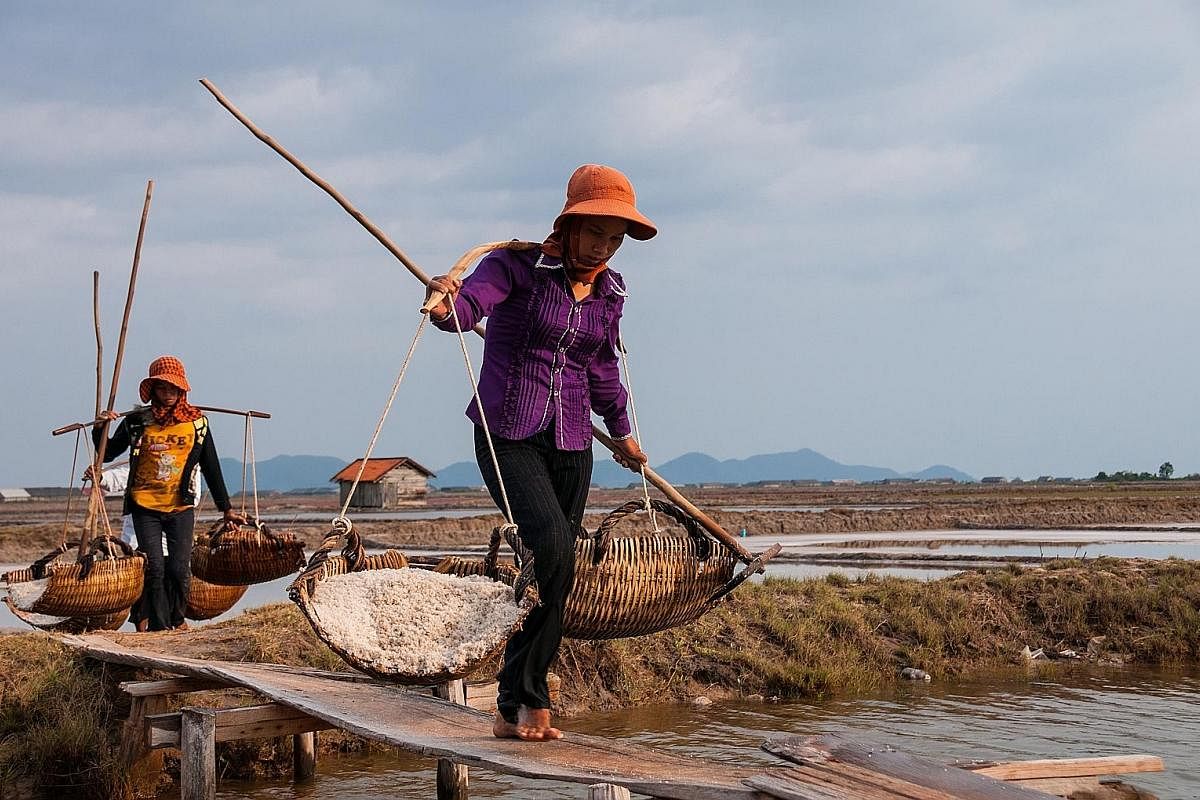
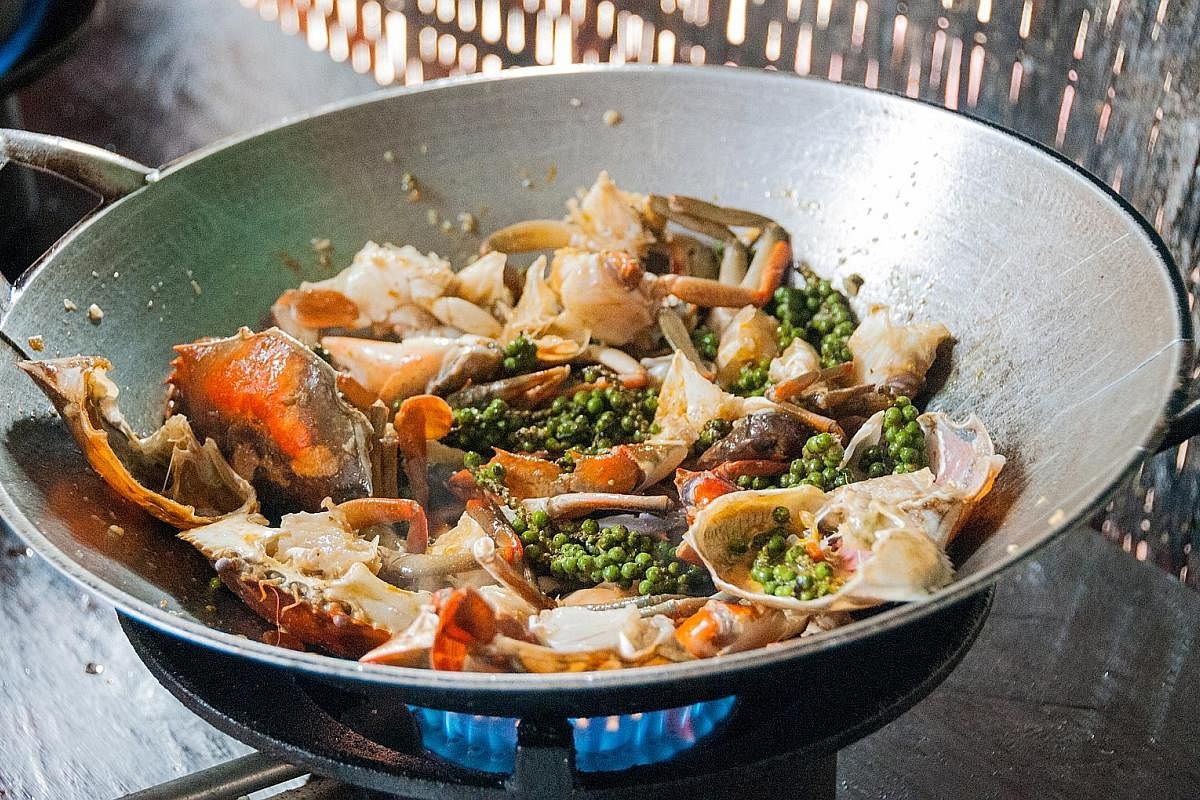
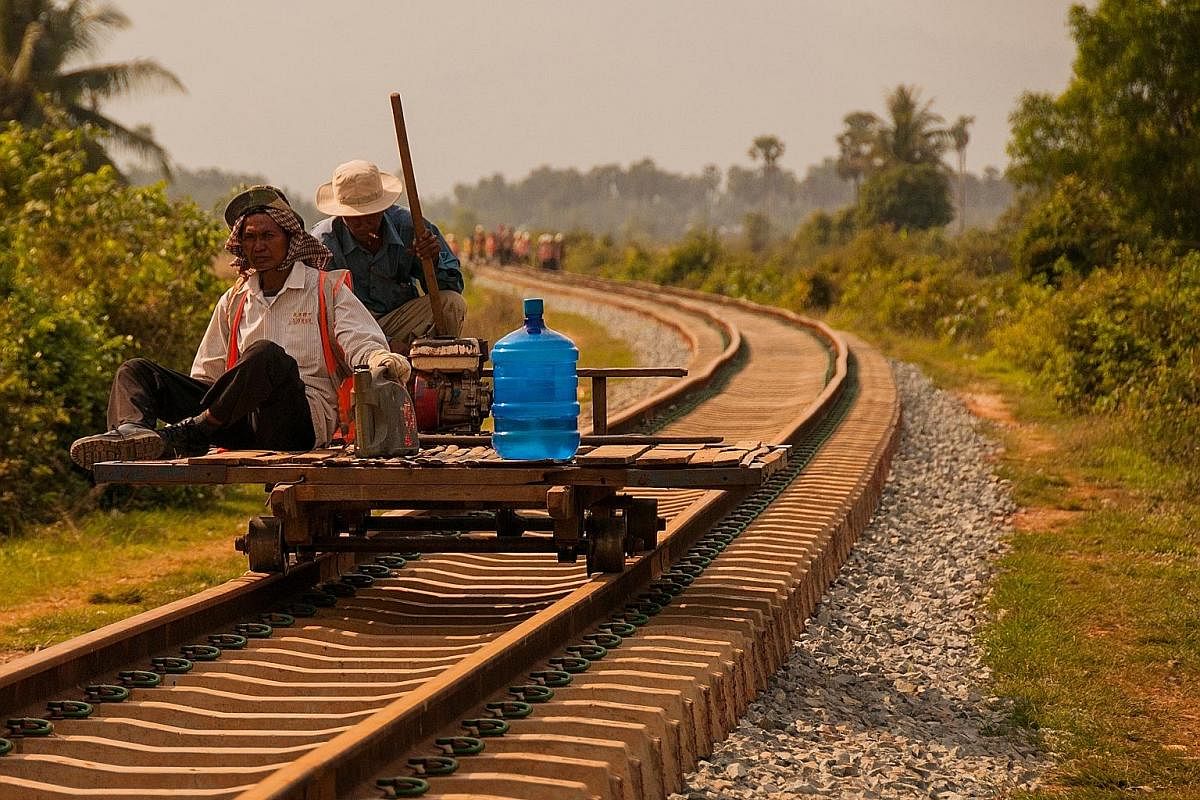
Salt shimmering in shallow saline pools intensifies the rays of the sun beating down on the Cambodian landscape.
It is hard work for the seasonal workers collecting salt in the fields of Kampot, with their bare feet exposed to caustic burns and no sunglasses to combat the omnipresent glare.
Salt and pepper are just everyday condiments on the tables of many countries the world over, but to the people of Kampot, on the south coast of Cambodia, these elements make a real difference in lifting them out of poverty.
And for visitors, salt and pepper are a far more useful souvenir than tacky tourist trinkets.
Sleepy riverside Kampot, at first glance, appears to offer little to the traveller. It does not have Siem Reap's ruins. And it does not even have Kep's beach, since it is situated 5km inland from the coast.
This is all part of the charm, however. Kampot, and the surrounding countryside, is a place to be immersed in Cambodian culture and the bucolic Khmer life.
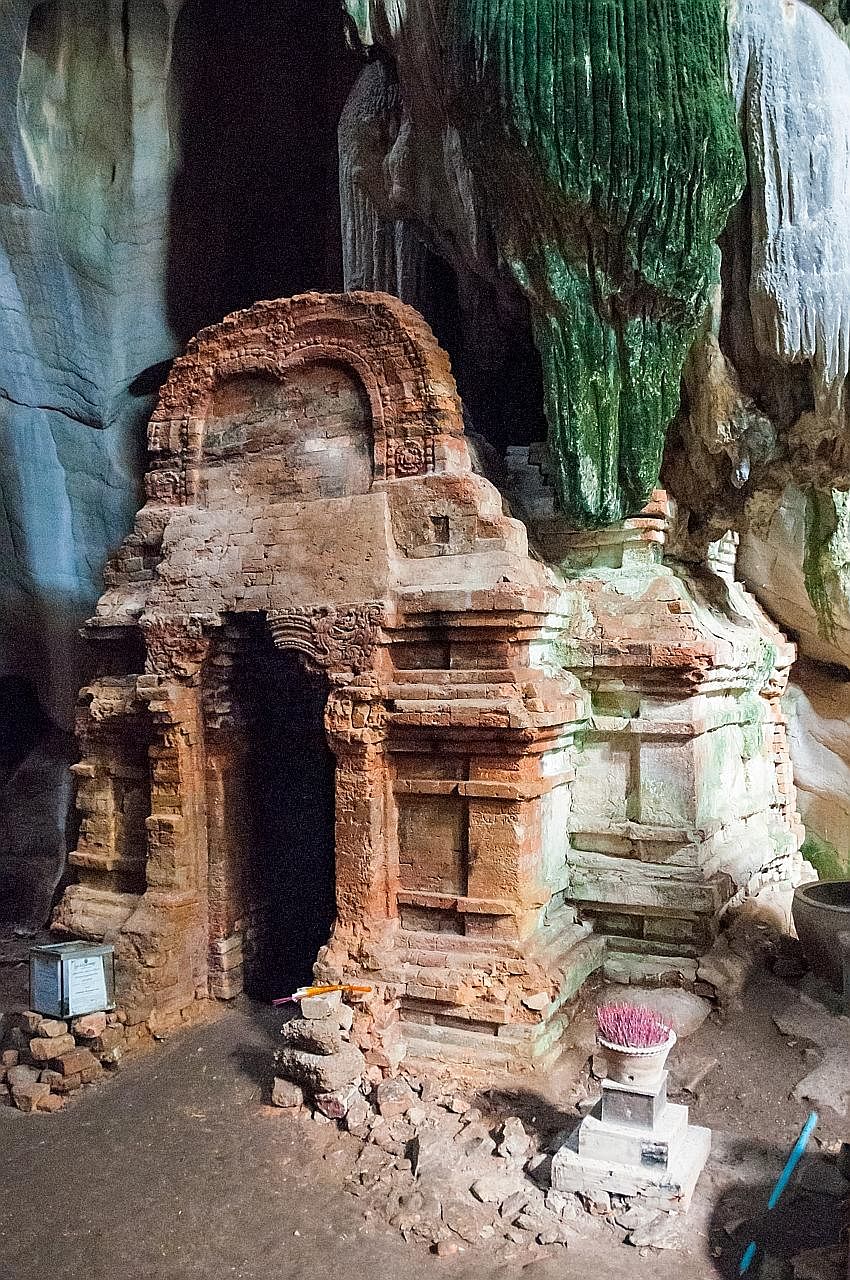
Over three days, I discover why pepper from Kampot is considered the world's best and that the verdant countryside is the area's greatest draw. And with it I find farmers are not just busy feeding the body but the soul as well.
My exploration starts in the fields outside the town. After paying my US$1 (S$1.30) entrance fee to Hindu cave-temple Phnom Chhnork, I meet a gaggle of excited teenagers. An additional US$1.50 gets me a torch, then a kid leads the way uphill.
As we descend into the cave, I am met by an unexpected kaleidoscope of colours. Red bricks from the Funan-era temple, dedicated to Shiva, contrast against green-hued stalactites along with the more normal white ones.
Some of the bricks of this temple, which dates back to pre-Angkor times around 500 AD, are stained green while others are more pink in shade.
Hindu temples outside the Angkor site at Siem Reap are unusual in Cambodia and those in caves are even rarer. Not much is known about the early history of Cambodia before the emergence of Angkor but the civilisation in the Kampot area is known by the Chinese name Funan and was influenced by Indian culture.
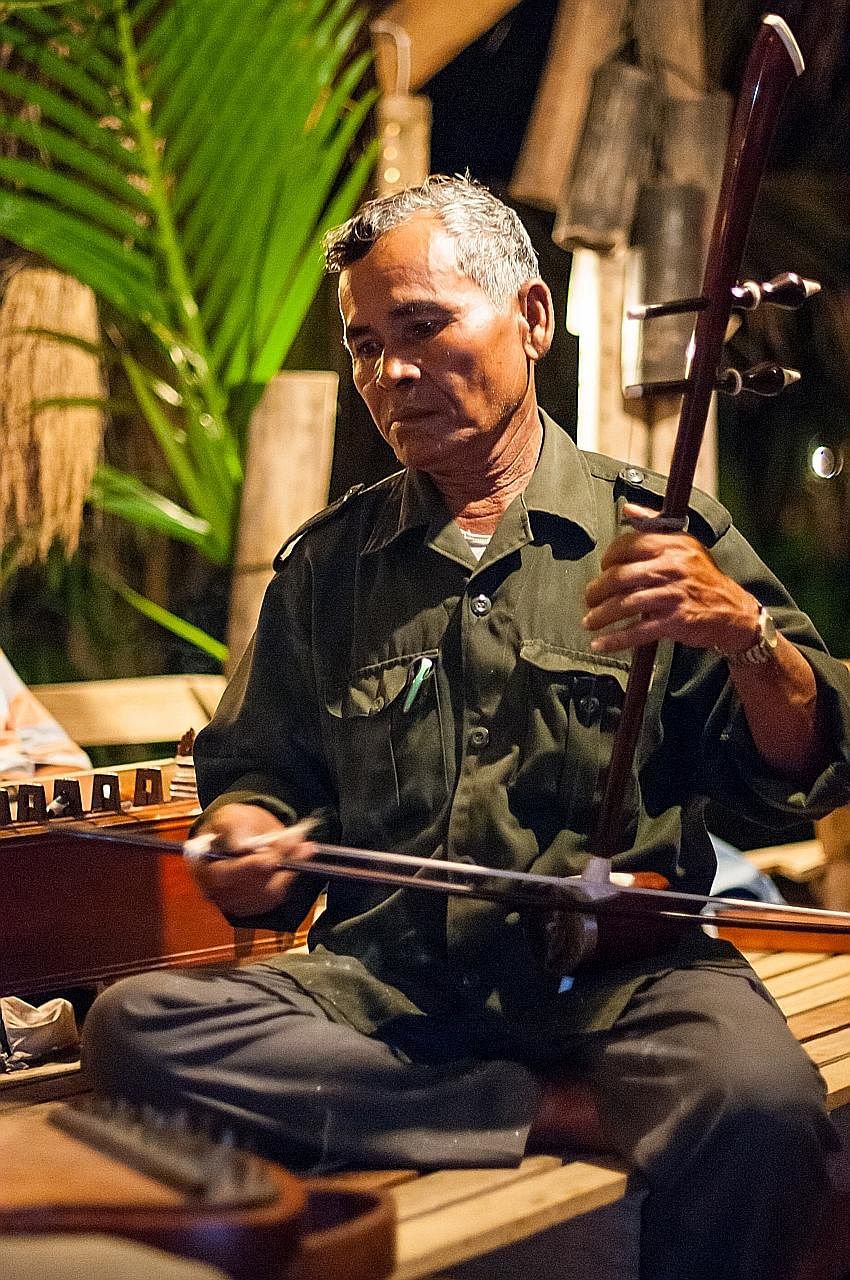
After emerging from a second cave - I spend about 30 minutes in both caves - I find myself in palm-fringed fields with farmers tending their vegetables while skinny cows graze on crop stubble.
Ten minutes further on by motorbike, I get to another set of caves at Phnom Sla Ta'aun (Kbal Romeas). This set is famed for its huge suspended rock caught between the walls in a shaft of light.
If you are more adventurous, Climbodia (www.climbodia.com), a Kampot-based company that offers climbing experiences, can take you abseiling deep into this cave system.
I spend that night a little outside Kampot with a cultural accompaniment to my dinner.
A musician intently strikes the kong voch toch, a set of gongs which encircles him. Nearby, an older man in an army surplus shirt stares into space, lost in the rhythmic music as he plucks the strings of his tro, a Cambodian kind of fiddle.
It is Saturday evening and I am at the weekly traditional music performance at Samon's Village (www.samonvillagekampot.com). A group of foreign tourists are savouring a buffet of traditional Khmer food.
These include a slow-cooked red Saraman beef curry - not unlike a Malaysian rendang but with star anise as a key ingredient. There are also bung chau rice-flour pancakes, with a yellow hue from the use of turmeric and stuffed with minced pork and beansprouts.
The first band of the evening mainly plays at weddings while the second is in demand for national and Buddhist celebrations. All are farmers who, in the dry season, supplement their income by playing traditional tunes.
Situated about 2km out of town on the banks of the Prek Kampong Bay River, unfortunately close to some backpacker party places, owner Samon has tried to recreate an idealised version of Khmer country life.
"I grew up in the countryside. That kind of landscape, even the smell of mud, the grasses, the rice fields, they are deep in my heart," Mr Samon tells me in English.
Later that evening, when I climb into my stilted hut, I realise I am not alone. Careful examination reveals a frog in the bathroom intent on serenading me to sleep.
The flavours of Khmer life still linger the next morning as I set out in search of Kampot pepper and its renaissance.
Every Parisian chef once knew that if he wanted the best pepper, he should choose Kampot pepper. As the country descended into chaos, pepper plantations were ripped up by Pol Pot guerillas - collective farms and enforced labour held no place for bourgeoisie crops such as pepper - or consumed by the encroaching jungle.
Today, thanks to geographical status protection and careful husbandry, Kampot is slowly regaining its pepper crown and production is growing.
Surrounded by pepper poles on a half-hectare farm, my guide takes up the story.
"My father told me people didn't want to come here. They were afraid of mines and Khmer Rouge soldiers," says Mr Meas Rim.
The area was a Pol Pot stronghold into the 1990s. Replanted in 2000, the early pepper crops fetched only US$1 a kg. It was not until around 2010 that, with marketing help, its reputation started to be restored and prices once again began to soar. It is around US$80 a kg now.
We ride on to the salt fields. It is the end of the day and workers are taking baskets of freshly harvested salt to the storeroom.
Mr Meas tells me that each month, they harvest 10 to 20 tonnes.
The season starts in December, with the canals and fields made from scratch each year, and harvesting lasting until April or May, depending on when the rains start.
Back in town, I am in time to catch the sunset over the river. Old colonial buildings line the promenade and now mostly house restaurants and guesthouses.
I choose to relax, though, in a cafe a few streets beyond and am surprised by a derelict-looking building opposite with speakers continually blaring bird calls.
Further exploration reveals that this is not the only building in Kampot like this and I discover it is all part of the lucrative trade in bird's nests.
By using speakers, the amplified sounds of the birds attract the swiftlets to nest in the building, making it easier to later harvest the nests made from their saliva.
Nearby, in the Old Market area, I visit the flagship store of Dorsu (www.dorsu.org). This social enterprise produces dresses and T-shirts from remnant cotton fabric while providing training and career opportunities and a fair wage to local women.
On my final day, I get to bring the local flavours together. Perhaps the most quintessential Kampot pepper dish marries the fresh green fruit with nearby Kep's famous crabs.
I start early at the market to buy the fresh ingredients. The crab snaps angrily back at me when I try to take its picture.
After dispatching the crustacean in the kitchen of a small restaurant during a cooking class, I divide it up. The dish uses a surprisingly large amount of sprigs of green peppercorns which, along with garlic, are the first ingredients to go into the wok.
Fish sauce, sugar and sea salt follow. The crab itself takes little time to cook, about five minutes, enough time to ensure that the shell gleams orange and that the meat is white.
As I tuck into my crab, I taste both the sea and the land. It seems that in Kampot, all you need do is add a dash of salt and pepper to bring out the local flavour.
• Mark Andrews is a Shanghai-based British lifestyle writer and photographer.
Join ST's Telegram channel and get the latest breaking news delivered to you.
A version of this article appeared in the print edition of The Sunday Times on January 28, 2018, with the headline The taste of Kampot life. Subscribe

